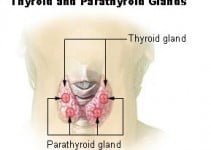
In short, 23 days menstrual cycle is almost normal, but not quite good. An average female menstrual cycle is for 28 days.
But, in many instances, it could be shorter or longer. However, a very short or very long menstrual cycle may point to some disease or pathological changes.
But, of course, things are not that easy. In most instances, changes in menstrual cycle duration are due to certain lifestyle changes. Additionally, too many factors may influence menstrual cycle duration, making identifying the real cause challenging.
Therefore, it is vital to understand the factors that may influence the menstrual cycle. Additionally, remember that all women are unique, and thus one would need to learn to listen to the body and the specific signals.
So, what is the normal menstrual cycle duration?
As already said that the average is 28 days. However, there is a significant variance in duration among the women. Even among the same woman, a cycle may vary from time to time. Therefore, it is vital to understand what is the normal range.
The normal range of menstrual cycles is 23 to 35 days [1]. This is a widely accepted normal range. Nonetheless, as one can see, the sweet spot is between 28 to 30 days. One can also clearly see that 23 is the lowest acceptable normal range.
Therefore, 23 days cycles cannot be viewed as something good, but it is not essentially very bad. Though there is no agreement on what duration is very low, a cycle of less than 21 days is generally bad, especially if it occurs consistently.
It is vital to understand that lots would depend on how commonly one experiences 23 days cycles. If it happens once in a while, it is acceptable.
However, if it happens regularly, then it is a cause for concern. Therefore, it is vital to consider how frequently the issue occurs.
If every cycle is for 23 days, it may be regarded as short; thus, one should undergo a medical examination to identify its causes.
Causes of 23-day or shorter menstrual cycle

It seems that the menstrual cycle can be affected by too many factors. Thus, its duration can be altered by certain nerve signals, hormonal changes, and even due to metabolic changes in the body.
That is why identifying the cause of changes in the menstrual cycle is quite challenging. The truth is that even doctors struggle to say why a cycle is short in a specific case.
Below are some of the reasons for 23 day menstrual cycle, or even shorter [2]:
Environmental factors
It appears that environmental changes are also adversely affecting menstrual cycle duration and regularity. Air pollution and increased exposure to various chemicals may disrupt endocrinal organs, causing hormonal changes and thus altering menstrual cycle duration.
Biological factors
There are many biological factors that affect the cycle duration. Some are non-modifiable, like genetics and ovarian reserve. Similarly, some women may experience menstrual cycle changes due to aging.
Nonetheless, body weight is the most common biological cause of changes in the menstrual cycle. It is something that can be modified.
It seems that obesity can significantly disrupt the menstrual cycle. What is bad about obesity is that it may make cycles shorter in some while causing longer cycles in others.
Lifestyle factors
Understanding lifestyle factors causing 23-day or shorter menstrual cycles is vital, as these are also modifiable factors. Moreover, some of these factors are present in most cases.
Thus, genetics may be just a predisposing factor in many instances, and lifestyle choices may serve as a trigger.
Tens of lifestyle choices may adversely impact menstrual cycle duration, like stress, shift work (changes in circadian rhythm), exercise, dietary choices, alcohol, substance abuse, and marijuana, to name a few.
Here it is vital to understand that even extensive exercise may negatively influence the menstrual cycle. For example, many women want to be slim and have shredded looks. However, very low body fat levels may negatively affect hormonal health [3].
When to see a doctor?
 That 23 day menstrual cycle may not be perfect, but it is not very bad. Hence, there is no need to see a doctor if there are no other symptoms and it occurs occasionally.
That 23 day menstrual cycle may not be perfect, but it is not very bad. Hence, there is no need to see a doctor if there are no other symptoms and it occurs occasionally.
Therefore, for example, if a woman has a menstrual cycle for 26 to 30 days, and sometimes it is as short as 23 days, this is not a cause of concern, especially with no other signs and symptoms.
However, if there are other signs and symptoms, one may see a doctor:
- Consistently Short Cycles: If your cycles consistently last less than 21 days, it’s crucial to consult a healthcare professional to rule out underlying issues.
- Severe Pain: If your shorter cycles are accompanied by intense pelvic pain, it could indicate an underlying condition that requires medical evaluation.
- Bleeding Changes: Medical guidance is essential if you notice unusual bleeding patterns, such as heavy bleeding or spotting between cycles.
- Fertility Concerns: Shorter cycles can affect fertility. If you’re trying to conceive and facing challenges, seeking medical help is recommended.
- Rapid Changes: Sudden changes in cycle length, especially accompanied by other symptoms, warrant medical attention.
Conclusion: Navigating Reproductive Health with Care
In the complex world of reproductive health, the duration of menstrual cycles serves as an essential marker of well-being. While shorter menstrual cycles can stem from various causes, it is vital not to overlook the condition.
If the cycle is consistently short, periods are painful, and there are fertility issues, all these are causes for concern. Recognizing when to seek medical attention is crucial for early detection and intervention, ensuring that any underlying concerns are addressed promptly.
Remember, the female body’s nuances are as unique as the individual herself. Consulting a healthcare professional can provide tailored guidance, empowering you to navigate your reproductive health journey with confidence and informed decision-making.
References
- Periods and fertility in the menstrual cycle. nhs.uk. Published April 9, 2018. Accessed August 13, 2023. https://www.nhs.uk/conditions/periods/fertility-in-the-menstrual-cycle/
- Campbell LR, Scalise AL, DiBenedictis BT, Mahalingaiah S. Menstrual cycle length and modern living: a review. Curr Opin Endocrinol Diabetes Obes. 2021;28(6):566-573. doi:10.1097/MED.0000000000000681
- Body Fat Percentage | Vanderbilt Faculty & Staff Health and Wellness. Accessed August 13, 2023. https://www.vumc.org/health-wellness/resource-articles/body-fat-percentage




 Dr. Preet Pal SB is a physician (M.D. Medicine) with a specialization in diabetes (Fellowship in diabetes, Royal Liverpool Academy). He has a particular interest in metabolic disorders, considering that they are rising in every corner of the world, more so in India.
Dr. Preet Pal SB is a physician (M.D. Medicine) with a specialization in diabetes (Fellowship in diabetes, Royal Liverpool Academy). He has a particular interest in metabolic disorders, considering that they are rising in every corner of the world, more so in India.